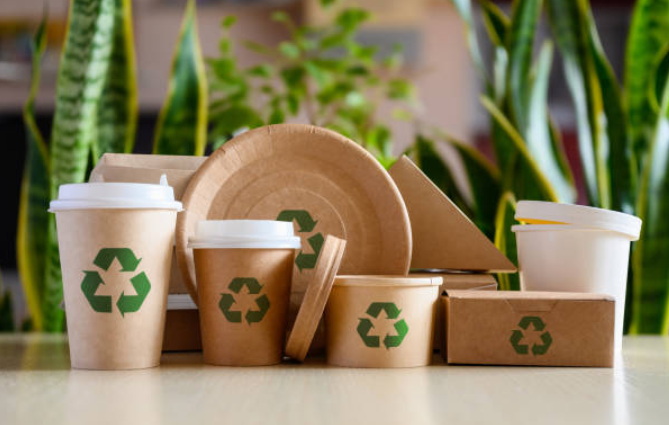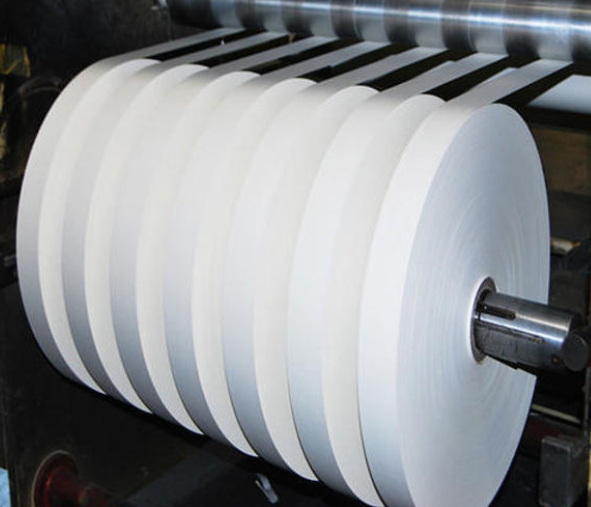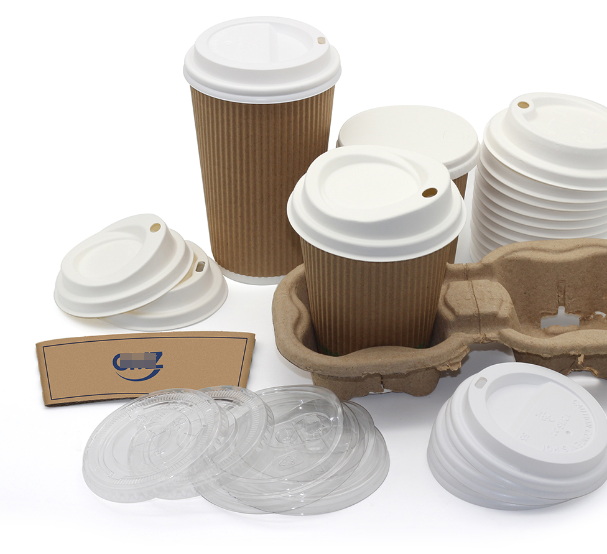
Content Menu
● Introduction to Disposable Cups
>> Paper Cups
>>> Environmental Impact of Paper Cups
>> Plastic Cups
>>> Environmental Impact of Plastic Cups
>> Biodegradable Cups
>>> Benefits of Biodegradable Cups
● Eco-Friendly Alternatives
>> Reusable Cups
>>> Benefits of Reusable Cups
>> Compostable Cups
>>> Benefits of Compostable Cups
>> Sustainable Paper Cups
● Challenges in Recycling and Disposal
>> Contamination Issues
>> Limited Recycling Facilities
>> Consumer Awareness and Behavior
● Innovative Solutions
>> Cup Collection Systems
>> Policy Initiatives
● The Role of Businesses and Consumers
>> Business Initiatives
>> Consumer Choices
● Conclusion
● FAQs
>> 1. What are the most common materials used in disposable cups?
>> 2. How do disposable cup materials affect the environment?
>> 3. What are some eco-friendly alternatives to traditional disposable cups?
>> 4. Can disposable cups be recycled?
>> 5. How can consumers reduce their environmental impact from disposable cups?
● Citations:
The use of disposable cups has become a ubiquitous part of modern life, from coffee shops to outdoor events. However, the environmental impact of these cups is a growing concern. This article will delve into the various materials used in disposable cups, their environmental effects, and explore eco-friendly alternatives.

Introduction to Disposable Cups
Disposable cups are made from a variety of materials, including paper, plastic, and biodegradable options. Each type has its own set of advantages and disadvantages, particularly when it comes to environmental sustainability.
Paper Cups
Paper cups are commonly used for both hot and cold beverages. They are typically made from wood pulp and coated with a thin layer of plastic, such as polyethylene, to prevent leakage. However, this plastic lining complicates recycling and contributes to landfill waste.
Environmental Impact of Paper Cups
- Deforestation: The demand for paper cups contributes to deforestation, as millions of trees are cut down annually to meet this demand. It is estimated that over 20 million trees are cut down each year for single-use paper cups, leading to reduced carbon dioxide absorption and increased pollution[4].
- Recycling Challenges: The plastic coating in paper cups makes them difficult to recycle, leading to a significant portion ending up in landfills. In fact, less than 1% of paper cups are recycled due to the lack of specialized facilities capable of separating the plastic lining from the paper fiber[3][4].
- Methane Emissions: When paper cups decompose in landfills, they release methane, a potent greenhouse gas that contributes to global warming[4].
Plastic Cups
Plastic cups are lightweight, inexpensive, and widely used for cold beverages. They are typically made from petroleum-based materials like polypropylene or polystyrene.
Environmental Impact of Plastic Cups
- Non-Biodegradable: Plastic cups are not biodegradable and can take hundreds of years to decompose, contributing to plastic pollution. They often end up in waterways, breaking down into microplastics that harm marine life and ecosystems[1].
- Microplastics: When plastic cups break down, they form microplastics that can enter the food chain and cause environmental damage.
- Energy Consumption: The production of plastic cups requires significant energy and contributes to greenhouse gas emissions.
Biodegradable Cups
Biodegradable cups, often made from materials like PLA (polylactic acid), offer a more sustainable alternative. PLA is derived from renewable resources such as corn starch or sugarcane.
Benefits of Biodegradable Cups
- Compostable: Biodegradable cups can decompose into organic matter under the right conditions, reducing landfill waste. However, they require specific conditions to break down completely[5].
- Lower Carbon Footprint: The production of PLA has a lower carbon footprint compared to traditional plastics.
- Renewable Resources: Made from renewable sources, these cups reduce dependence on fossil fuels.
Eco-Friendly Alternatives
As concern for the environment grows, several eco-friendly alternatives to traditional disposable cups have emerged:
Reusable Cups
Reusable cups, made from materials like stainless steel or silicone, are the most environmentally friendly option. They can be used multiple times, reducing the need for single-use cups.
Benefits of Reusable Cups
- Sustainability: Reduces the demand for disposable cups and minimizes waste.
- Cost-Effective: Although initially more expensive, reusable cups save money in the long run.
- Durability: Made from durable materials, they can withstand regular use.
Compostable Cups
Compostable cups, such as those made from bamboo or sugarcane, are biodegradable and can reduce landfill waste.
Benefits of Compostable Cups
- Biodegradable: Breaks down into organic matter, reducing environmental impact.
- Sustainable Materials: Made from renewable resources, reducing deforestation and fossil fuel use.
Sustainable Paper Cups
Some paper cups are now made from sustainable wood pulp and use aqueous or bioplastic linings, which are more environmentally friendly than traditional plastic linings. These cups can be composted in specific facilities, reducing waste[7].

Challenges in Recycling and Disposal
The recycling and disposal of disposable cups pose significant challenges:
Contamination Issues
Paper cups are often contaminated with residual liquids or food waste, which complicates the recycling process. This contamination can render entire batches of recyclables unusable[3][8].
Limited Recycling Facilities
Many recycling centers lack the specialized equipment needed to process paper cups, leading to a low recycling rate. The presence of mixed materials further complicates sorting and recycling processes[3][8].
Consumer Awareness and Behavior
Consumer awareness and behavior play a crucial role in improving recycling rates. Educating consumers about proper disposal practices and the importance of using eco-friendly alternatives can significantly reduce waste.
Innovative Solutions
Innovative solutions are emerging to tackle the issue of disposable cup waste:
Cup Collection Systems
Systems like the Unisort Cup Collector aim to simplify the collection and recycling of single-use cups, reducing their environmental impact[1].
Policy Initiatives
Policies such as levies on disposable cups and discounts for reusable cup users are being implemented to encourage sustainable practices. However, these initiatives face challenges like inconsistent implementation across regions[8].
The Role of Businesses and Consumers
Both businesses and consumers have a role to play in reducing the environmental impact of disposable cups:
Business Initiatives
Businesses can adopt sustainable cup options, such as biodegradable or compostable cups, and implement recycling programs. They can also encourage customers to use reusable cups through incentives like discounts.
Consumer Choices
Consumers can make a significant impact by choosing reusable cups, supporting businesses that offer sustainable options, and advocating for better recycling infrastructure.
Conclusion
Disposable cup materials have significant environmental impacts, ranging from deforestation to plastic pollution. However, eco-friendly alternatives like biodegradable and reusable cups offer sustainable solutions. By choosing these options, consumers can reduce their environmental footprint and contribute to a more sustainable future.

FAQs
1. What are the most common materials used in disposable cups?
Disposable cups are commonly made from paper, plastic, and biodegradable materials like PLA. Paper cups are often lined with plastic, while plastic cups are made from materials such as polypropylene or polystyrene.
2. How do disposable cup materials affect the environment?
Disposable cup materials contribute to environmental issues such as deforestation, plastic pollution, and greenhouse gas emissions. Paper cups lead to deforestation and methane emissions, while plastic cups form microplastics and persist in the environment for centuries.
3. What are some eco-friendly alternatives to traditional disposable cups?
Eco-friendly alternatives include reusable cups made from stainless steel or silicone, biodegradable cups made from PLA, and compostable cups made from materials like bamboo or sugarcane. These options reduce waste and minimize environmental impact.
4. Can disposable cups be recycled?
Most disposable cups are not easily recyclable due to their mixed materials. Paper cups with plastic linings and plastic cups with additives complicate the recycling process, leading to a low recycling rate.
5. How can consumers reduce their environmental impact from disposable cups?
Consumers can reduce their impact by using reusable cups, choosing biodegradable or compostable cups when disposable options are necessary, and supporting businesses that offer sustainable cup options.
Citations:
[1] https://www.unisort.co.uk/the-impact-of-single-use-cups-on-the-environment-how-the-unisort-cup-collector-makes-a-difference/
[2] https://gmz.ltd/5-best-eco-friendly-disposable-cups-lesser-known/
[3] https://evolvewaste.co.uk/the-challenges-of-paper-cup-recycling-why-its-more-complicated-than-you-think/
[4] https://huskee.co/blog/the-environmental-effect-of-disposable-coffee-cups/
[5] https://qnpsupplies.com/a-full-guide-to-biodegradable-vs-compostable-cups/
[6] https://cases.open.ubc.ca/w17t2con200-3/
[7] https://forte.bunzl.com.au/alternatives-to-plastic-cups-best-sustainable-disposable-cups/
[8] https://www.biffa.co.uk/biffa-insights/disposable-coffee-cups-are-complicated
[9] https://stack-cup.com/blogs/news/the-environmental-impact-of-disposable-cups
[10] https://www.limepack.eu/blog/paper-cups-en/standard-vs-biodegradable-paper-cups-which-is-better-for-the-environment
[11] https://www.limepack.eu/blog/paper-cups-en/paper-cups-vs-other-materials-in-environmental-impact
[12] https://takeawaypackaging.co.uk/eco-friendly-alternatives-to-plastic-cups/
[13] https://perfectdailygrind.com/2021/06/why-is-recycling-single-use-coffee-cups-so-difficult/
[14] https://emeraldecovations.com/2024/08/exploring-the-impact-of-disposable-coffee-cups-on-the-environment/
[15] https://mtpak.coffee/2023/12/recyclable-coffee-cups-compostable-preferred/
[16] https://ecochain.com/blog/what-coffee-cups-teach-us-about-manufacturing/
[17] https://www.asustainablelife.co.uk/six-alternatives-to-disposable-coffee-cups/
[18] https://www.recyclecoach.com/blog/why-cant-you-recycle-paper-coffee-cups
[19] https://sci-hub.se/downloads/2020-07-25/5f/foteinis2020.pdf
[20] https://www.biopak.com/au/resources/biodegradable-versus-compostable-packaging

















